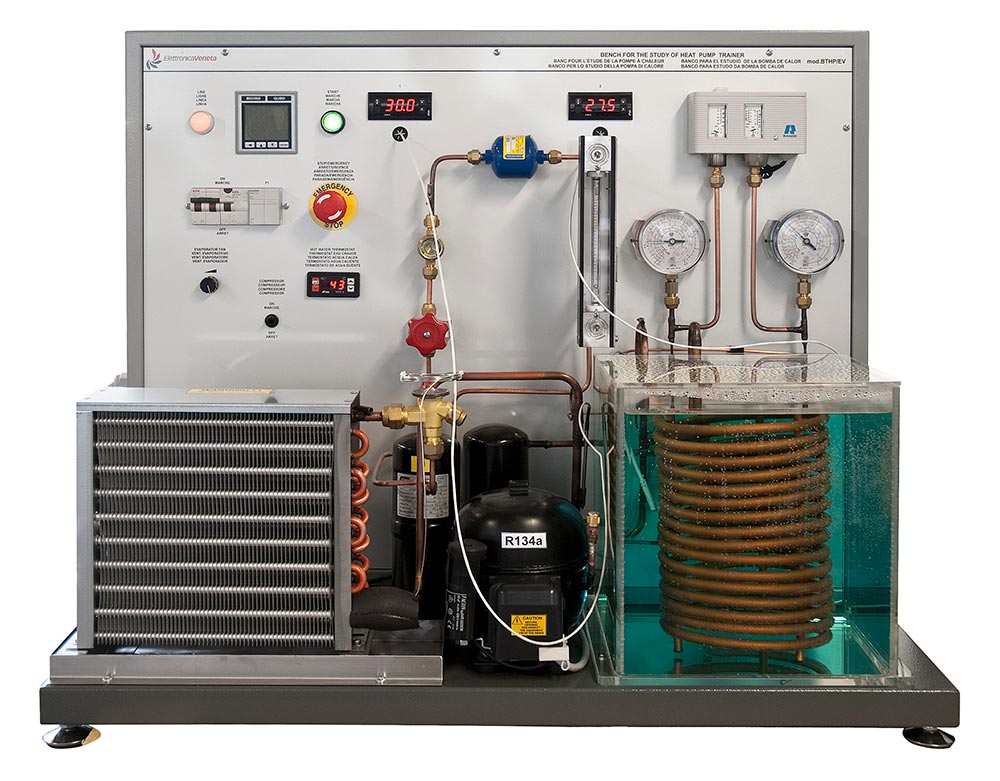
Is It Possible For A Person To Upgrade The Heat Pump In An Effective Manner?
When we first moved into our house, the previous owner installed a Heat Pump with Air Water Heater. We were excited about being able to control the temperature in our home and not having to run an electric heater every time we wanted to have warm air. As time went on, we became less enthusiastic as the heat pump only got us so far before we needed to add another device (an electric heater).
The heat pump was also loud. The compressor started up when you turned it on, but then remained humming for hours while trying to keep your house at a comfortable temperature. It did work well enough that we never bothered to turn off the compressor. But now that we are upgrading to a new home and using a heat pump with an air-source heat pump, we are wondering if it is worth it to leave the compressor running all the time.
We live in Florida, where it can get pretty hot during the summer months. Our old house had two small bedrooms (one each) and a full bathroom. With the heat pump alone, we would often wake up and find that the upstairs bedroom was uncomfortably warm, even though there was no one sleeping in the room. So we added an electric space heater to help offset some of this unwanted heat.
As we were preparing to move into our new home, we decided to replace the old heat pump with a new unit that included an air-source heat pump. The new unit is much quieter than the original and will be more efficient than the old system was. However, since we are spending close to $10,000 on this upgrade, we want to make sure that we don’t need to use heaters in the future.
This brings up the question of whether or not it is better to leave the heat pump on all day. In other words, should we set the thermostat to 78 degrees or 80 degrees, or should we leave the heat pump running and set the thermostat at 68 degrees? And what happens if you forget to set the thermostat at night? Are there any negative consequences to leaving the heat pump on all night?
If the answer to these questions is “Yes”, then you might be interested in reading about how to choose a heat pump with air source.
The Best Answer Is…
You’re probably asking yourself, “Why do I want to set my thermostat at 78 degrees if I’m going to be running the heat pump all day anyway?” Well, let’s take a look at the numbers. According to the Department of Energy, your home will lose 1% of its energy efficiency for every 10 degree decrease in the indoor temperature. This means that if you set the thermostat at 78 degrees, you’ll be losing 3% of your efficiency compared to setting it at 80 degrees. That may sound like a lot, but if your goal is to save money on your monthly heating bill, it doesn’t matter how little energy loss you experience. You just want to save as much money as possible.
So if you set the thermostat at 78 degrees, you’ll most likely see a savings of about $50 per month. If you decide instead to set it at 80 degrees, you’ll see a savings of about $60 per month. Now, if you’re planning on living in your house year-round, then the cost of operating the heat pump will be negligible. But if you plan on moving out of your home after the winter, then you’ll want to try to save as much money as possible.
There are varieties of options that are available for the people. A person can go through the õhk vesi soojuspumba hind that are available in general. These are the hand pumps that are like a necessity for the people. In the long run the option will prove to be a good one. A person can plan to reach the goals in short period.
The next thing you’ll probably ask yourself is, “Well, what does the warranty say about leaving the heat pump running all day?” The answer is simple. The manufacturer has already considered the issue in their design process. They’ve figured out exactly how long they expect the heat pump to last, and they’ve decided that it won’t affect the longevity of the product. All they care about is whether or not you’re getting the most bang for your buck.
If you’re concerned about your warranty, you may want to consider adding a backup electrical heater to your system. You could install a space heater in any room of your home, which will give you the ability to set the temperature to whatever level you want without worrying about running the heat pump.
Finally, you may wonder why you’d ever want to spend over $10,000 on a heat pump. Well, here’s the problem. A heat pump is supposed to be used in conjunction with a separate source of heat. Your heat pump works by pumping cold air from outside the house through your ducts, picking up the coolness inside, and then returning it back outside again. But if you have a separate source of heat such as oil or wood, then you need to be careful that the heat isn’t transferred to the heat pump.
In order to prevent this, the heat pump needs to be insulated properly. Insulation is expensive, and it’s very difficult to insulate something that moves around as quickly as the air in your home. Also, the insulation will eventually degrade, so it’s best to put it behind a wall in a place where it will stay for the life of the unit.
A good way to ensure that the heat pump is working efficiently is to measure the temperature differential between the outdoor air temperature and the temperature inside your home. If you find that the temperature difference is too great, then the heat pump may not be doing its job correctly. If you find that the temperature differential is too low, then either your heat pump is defective or there’s a leak somewhere in your system. Either way, it’s time to call a professional.
And if you think this sounds complicated, consider that it’s actually easier to install a conventional furnace. There’s no worry about keeping the heat pump and the furnace in sync because they both serve the same purpose. The furnace heats your home and the heat pump picks up the heat and returns it to your home. So if you want to save money, it makes sense to invest in a furnace rather than a heat pump.
But in case you’re wondering, there is a third possible solution. You may be able to buy a combined heat and power (CHP) system. These systems combine a gas furnace with an electric heat pump. They use the electricity generated by the gas furnace to operate the heat pump. In addition to saving you money, CHPs also provide the benefit of reducing your carbon footprint.



